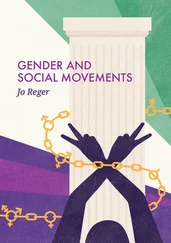That lifestyle identity branding is essential to successful marketing can be seen in the marketing error committed by Starbucks, who sought to expand the number of cafés but in doing so began to lose their role of providing a place where one can go to work, relax or meet friends as a part of a “Starbucks community”. In the early years of 2000, Starbucks began to buy out competitors’ coffee shops in an attempt to create a monopoly that would squeeze out their competitors. With sales falling, in 2008, Starbucks realized their mistake and began to scale back on the number of cafés. More coffee shops did not necessarily mean more profits (Pellegrin 2009: 114). Thus, branding –using any social classification, such as sex, economic power, or ethnic group– is considered an absolute “must” in today’s advertising campaigns.
The disturbing insistence of the portrayal of women, and more recently of men, as sex objects in commercial advertising has been well documented in many western countries. In particular –and at least since the so-called sexual revolution of the 1960s in the Anglo world – the emphasis on “the liberated woman” has not actually brought about a liberated woman (as in Joan Didion’s description of the youth culture of the 1960s in San Francisco, Slouching towards Bethlehem , 1968) but rather has contributed to the present-day increase in the “objectification” of women (Banyard 2011), which has been linked to trends toward misogyny (Jeffreys 2005). There is, as well, research that shows that some even women “objectify” themselves (Walter 2010) to their own ultimate detriment. Walter (2010: 102-118) has documented how the present ubiquity of pornography has convinced even some younger feminists that pornography can be “liberating”. These cultural attitudes are formed at a very young age. Banyard (2011: 26) reports on a UK poll carried out by YoungPoll.com that found that a quarter of the 3,000 teen girls questioned considered that it was more important to be beautiful than clever. These aspects are further discussed in section 4 and useful web sites are listed at the end of the bibliography.
3 Official propaganda campaigns. Targeting the group
The term ‘propaganda’ often carries a negative connotation, as in this definition from the 1930s by Lumley (1933: 44): “Propaganda is promotion which is veiled in one way or another as to (1) its origins or sources, (2) the interests involved, (3) the methods employed, (4) the content spread, and (5) the results accruing to the victims –any one, and two, any three, any four, or all five.” However, as many investigators have noted, it is probably not possible for propaganda to be successful with the public if there are no motivational elements whatsoever to be relied on. Long ago Huxley (1936: 174) pointed out that “Propaganda gives force and direction to the successive movements of popular feeling and desire; but it does not do much to create these movements. The propagandist is a man who analyses an already existing stream.”
In this regard, such official advertising and its connection to social change advertising has frequently been directed towards women, although not exclusively, as has been observed in Figure 2 above. In war times in the Anglo world, men were also focused on, but to a lesser extent than women. The fact that such official campaigns, for instance, for homemaking, occurred not only during the early period of the Franco regime, but also in other countries, such as the UK and the US, seems to indicate that these campaign tendencies have much more to do with people’s conception of women’s roles (and, men’s roles) than with the type of political ideology underlying the state apparatus. In other words, they respond to a sexist ideology, rather than a national one.
In Spain, some important research has been published on governmental advertising campaigns carried out by the Sección Femenina (the women’s Falangist organization, 1934-1977) during the pre- and post-civil war period. This Falangist organization’s educational plans and leaflets distributed to the public at large has been considered elitist, classist and extremely gender-biased. Graham (1995: 184) has pointed out the connection between state propaganda and Spanish Catholic ideals of the post-war period: “The regime promoted an ideal image of womanhood as eternal, passive, pious, pure, submissive woman-as-mother for whom self-denial was the only road to real fulfilment.” As studied by many Spanish historians (Molinero (1998), Valiente Fernandez (1998)), the role of women during the Civil War, and after, was one of support for men, who were the “real protagonists” of history. In their role as wives, daughters, and mothers, women’s main duties were those of ensuring the educational and cultural transmission of the Falangist traditional values. For instance, regarding training for marriage, the Falange and JONS, a combination of two fascist organizations, advised Spanish women as late as 1958 to observe the following “principles” (Asociación Cultural Nueva Luna 2010):
1. Have a delicious meal prepared for when he comes home [Ten preparada una comida deliciosa para cuando él regrese del trabajo.]
2. Offer to take off his shoes. [Ofrécete a quitarle los zapatos.]
3. Speak in a low, relaxed tone [Habla en tono bajo, relajado y placentero.]
4. Prepare yourself: re-do your make-up, place a bow in your hair. His hard day at work will perhaps require a bit of cheer and one of your duties is to provide it for him. [Prepárate: retoca tu maquillaje, coloca una cinta en tu cabello. Su duro día de trabajo quizá necesite de un poco de ánimo y uno de tus deberes es proporcionárselo.]
5. During the coldest days you should prepare a fire in the fireplace so that he can relax while watching it [Durante los días más fríos debéis preparar un fuego en la chimenea para que se relaje frente a él.]
6. Taking care of his comfort will give you great personal pleasure [Preocuparte por su comodidad te proporcionará una satisfacción personal inmensa.]
7. Lessen any noises that might be present [Minimiza cualquier ruido.]
8. Greet him with a warm smile and show him your wish to meet his needs [Salúdale con una cálida sonrisa y demuéstrale tu deseo por complacerle.]
9. Listen to him, allowing him to speak first; remember that his topics of conversation are more important than yours [Escúchale, déjale hablar primero; recuerda que sus temas de conversación son más importantes que los tuyos.]
10. Never complain to him if he arrives late, or he goes to dinner or to other pastimes without you. [Nunca te quejes si llega tarde, o si sale a cenar o a otros lugares de diversión sin ti.]
11. Make him feel comfortable; have him relax in a comfortable armchair [Haz que se sienta a gusto, que repose en un sillón cómodo.]
12. Have a cool or hot drink prepared for him [Ten preparada una bebida fría o caliente para él.]
13. Do not ask for explanations regarding his actions or question his judgments or personal integrity [No le pidas explicaciones acerca de sus acciones o cuestiones su juicio o integridad.]
14. Remember that he is the Master of the house [ Recuerda que es el amo de la casa.]
15. Encourage your husband to practice his hobbies and be helpful to him without being overly insistent. [Anima a tu marido a poner en práctica sus aficiones e intereses y sírvele de apoyo sin ser excesivamente insistente.]
16. If you have a hobby, try not to bore him by talking about it, since what interests women are really trivial affairs compared with those of men [Si tú tienes alguna afición, intenta no aburrirle hablándole de ésta, ya que los intereses de las mujeres son triviales comparados con los de los hombres.]
17. At the end of the day, tidy up the house so that it is in order the next morning [Al final de la tarde, limpia la casa para que esté limpia de nuevo en la mañana.]
Читать дальше












